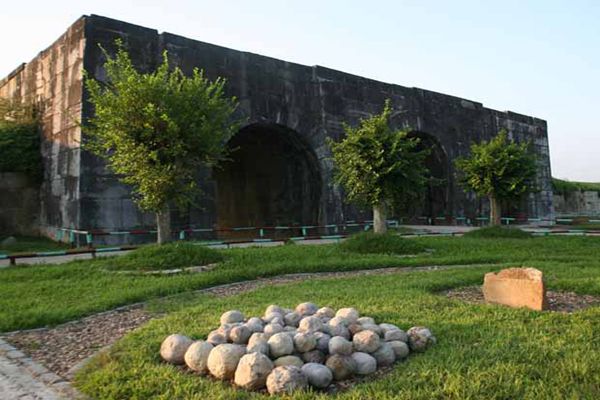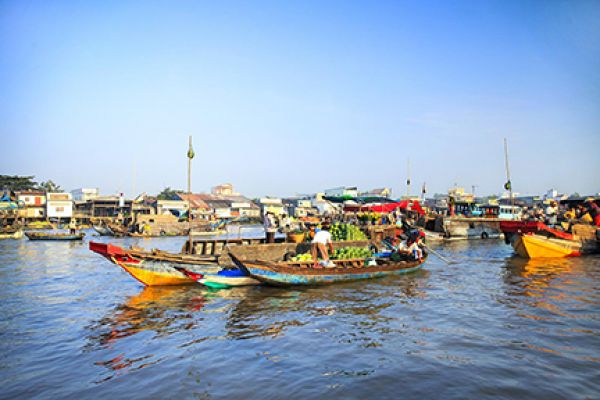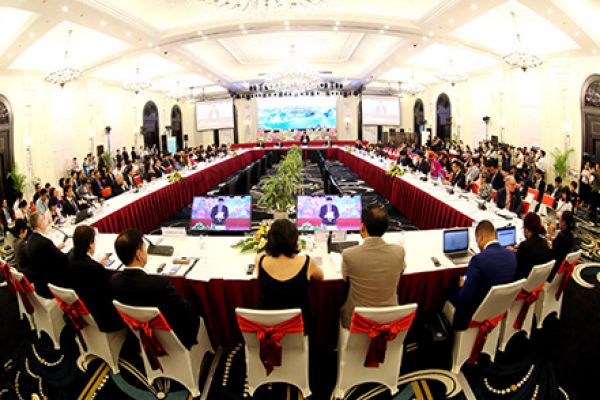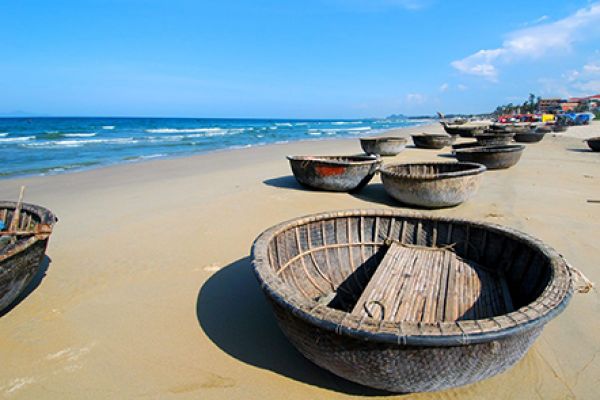The Muong, with a population of more than 1 million people, are scattered in large areas of Thanh Hoa, Son La, Phu Tho and Ha Tay, Ninh Binh and Nghe An provinces. In Hoa Binh province alone, their population is about 46,000, accounting for 6 percent of the provincial residents, dwelling mainly in small valleys or the lowlands of surrounding mountains.
Up till now, the values of their traditional culture have been preserved. Virtually all of them live in stilt houses, drink alcohol by pipe and hold communal cultural activities in these houses. In comparison with the stilt-houses of the Tay and the Thai, the Muong's are lower and smaller, with simpler and lighter architecture.
As a story goes, once upon a time, the Muong lived in caves and grottos. One day, a couple caught a tortoise by chance. As they were about to kill it for food, the tortoise said: "If you spare my life, I'll tell you how to build houses to live in". From then on, the Muong had their own houses and always abstained from taking tortoises, as a form of gratitude to the tortoise genie.
The Muong language belongs in the Austro-Asian Viet-Muong linguistic family. In spite of its numerous dialects, its main core is formed by the dialects of the four bigger Muong residential centres, namely "Bi-Vang-Thanh-Dong", with the "Muong Bi" language having the most tones.
Muong costumes are fairly original. Muong males wear brown or indigo garments of coarse cotton fabrics, and the females' attire includes a white head-scarf, brassiere and open short vest, complete with a long skirt flowing from the breasts down to the heels. The delicacy of the dress lies in its multi-colour upper hem made of silk, stylized in geometric motifs or bird, dragon and phoenix decorations, to enhance the beauty of the mountainous ladies.
The Muong like sour and bitter food, therefore fish, sour bamboo shoot or bitter soups are their specialties. They have long known how to distill spirits, but their main beverage in the festivities is can wine (drinking wine through a long
bamboo pipe), with fascinating rules for drinking that always prolong the merry-making parties.
The Xec bua Spring Festival, the Xuong Dong (Taking to the paddy-fields) ceremony, the Cau Ma rituals (Calling up ghosts), the Rua La Lua rites (Washing the rice-plant leaves), the Com Moi (Welcoming new rice) are traditional fetes that are celebrated still today.
The Xuong Dong is the biggest and most popular festival, usually held at the start
of the new year, and including the staging of a procession for the Mountain Genie to take him back to his shrine. During the fetes, people merrily indulge in games and drinking bouts, singing and dancing to the rhythm of the indispensable gongs and other musical instruments. They usually perform the harvest feasts and house-warming parties at home.
The well-known epic of "The Birth of Earth and Water", with tens of thousands of verses, in a variety of sections, constitutes an original piece in the treasure of Muong folklore. It is rich and diverse, well nurtured by the Muong and appreciated by Vietnamese. The long ballad expresses the Muong conceptions of mankind and the universe, and the history of their long, arduous struggles with nature for their survival and development.
In addition, the Muong have many other genres in their rich treasure of folklore including old tales and legends, fables and jokes, anecdotes and folk songs, sayings and proverbs, popular satirical verses and parallels.
The love ballads, including wishes and greetings, along with the hat vi, a form of dialogue sung in alternating verses, have long been practiced, with daily creations and additions.
Muong musical instruments include the gong and flute, wooden trumpet and monocord, cymbals, brass drum, guitars and panpipes. In concert performances, the Muong have a set of 6-12 large gongs (called dan chieng sac bua), played in harmony with flutes, at merry-making parties and festivities. To the Muong, the gongs are heirlooms, symbols of wealth and prosperity. The flutes are usually blown on a quiet, peaceful moon-lit night to call lovers.
Nowadays, along with the national development countrywide, with inter-related and interacting ethnic cultures, the Muong culture has experienced certain changes. However, the Muong culture continues to make worthy contributions to the diversity and unity of Vietnamese culture in general.
Vietnam Review










(84-63) 3 826042 – (84-63) 3 511142
No 54 Nguyen Dinh Chieu, Ham Tien Central Mui Ne Beach Binh Thuan Vietnam
523 To Hien Thanh District 10 Ho Chi Minh City Vietnam
Ha Long Halong City Quang Ninh Vietnam
A13 Hung Thong 2 Halong City Quang Ninh Vietnam




